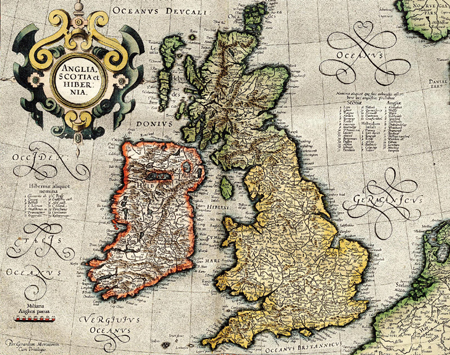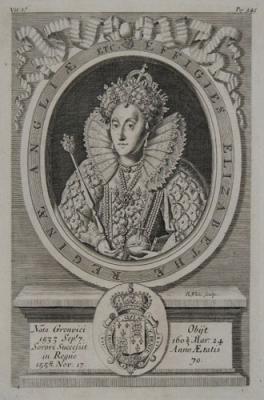- Anne Boleyn Files
This blog is written and managed by Claire Ridgway, a full-time freelance writer, closet history lover, armchair historian and champion of the underdog, from England – land of the Tudors, Shakespeare,
- Architecture and Art of the British Renaissance
This website provides an overview of the development of Tudor and Elizabethan architecture and painting. Each section has a brief description of the characteristics of each style of architecture and painting. Illustrations can be found by referring to the links in the Bibliography & Resources section.
- BBC History - British History, The Tudors
Britain has been shaped by turmoil between its nations, and tension between state and church. But centuries of conflict would forge the power at the heart of the largest empire the world has ever seen.
- British History Online
A digital library containing some of the core printed primary and secondary sources for the medieval and modern history of the British Isles.
- Elizabeth Files
A list of links to primary sources from the Elizabethan period which you will find useful for researching Elizabeth I’s life, reign and Elizabethan times.
- Elizabeth I (1533-1603)
This website provides interesting as well as educational information on the life and times of Queen Elizabeth I (1533-1603). It is intended to be suitable for web-users of all ages and academic ability, and therefore some of the more complex issues of the Queen's reign may appear to have been superficially treated.
- Elizabethan Costume Page
In depth web page containing information on Elizabethan clothing. A costume researchers dream for information on this era!
- Elizabethan England Life
This website will give you information of daily life during the Elizabethan period in England. It covers Fashion, Crime, Torture, Theater, Arts and Culture, Family, Children, Family, Education, Medicine, and many other facts about the Elizabethan times. There is also given detailed information of Superstitions, Laws, and Religions of the period.
- Elizabethan Era
This website contains information on Elizabethan England, Elizabethan Times, Elizabethan Life, Elizabethan Period, Elizabethan Food, Elizabethan Age, The Spanish Armada, Queen Elizabeth I, Elizabethan Clothing, Elizabethan Theater, Elizabethan Sports, Elizabethan Music, Old Elizabethan Recipes, The Age of Exploration, and an Elizabethan Dictionary.
- Elizabethan Project
This website is an array of web links on every Elizabethan subject imaginable! From the Tower of London to Social Backgrounds you are almost certain to find what you need.
- History: Great Britain: The Tudors (period)
Free e-books covering the Tudor period.
- Life in Elizabethan England A Compendium of Knowledge 1558-1603
This is an extraordinary and free searchable online book covering many subjects on life in Elizabethan England. This online book includes information on games, money, weddings, food, occupations, fashions, and much more.
- Luminarium: Anthology of English Literature
Contains original texts and information about authors from the Medieval period through the Restoration.
- Public Records Office (PRO)/National Archives (UK)
The UK government's official archive, containing 900 years of history with records ranging from parchment and paper scrolls through to digital files and archived websites.
- Renascence Editions
An online repository of works printed in English between the years 1477 and 1799.
- Welcome to the Renaissance Faire
An entertaining website with extensive resources under the Language and Pronunciation section for Elizabethan language including: pronunciation, vocabulary, grammar, forms of address, insults, cursing, and songs of the times.



